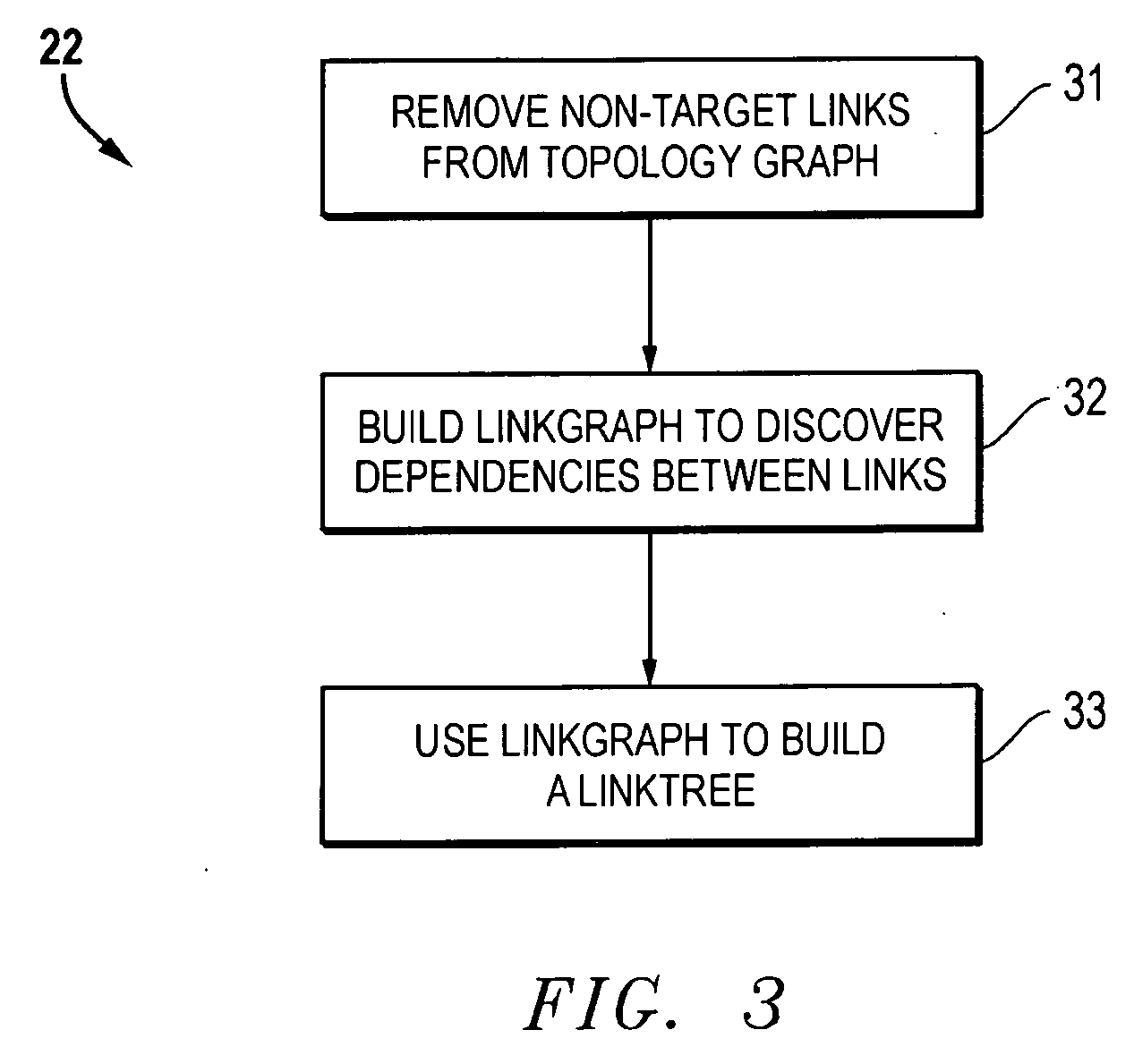Centralized link-scope configuration of an internet protocol (IP) network
a technology of internet protocol and configuration attributes, applied in data switching networks, frequency-division multiplexes, instruments, etc., can solve the problems of insufficient solution of krishnan method, insufficient design of web server based methods, and inability to fully understand the scope of configuration attributes, etc., to achieve simple sequence calculation, improve the effect of error handling and fast operation tim
- Summary
- Abstract
- Description
- Claims
- Application Information
AI Technical Summary
Benefits of technology
Problems solved by technology
Method used
Image
Examples
Embodiment Construction
[0047] The present invention provides an improved method of configuring link-scope-type managed objects in IP-based networks from a centralized management node. An exemplary embodiment is described in terms of the Open Shortest Path First (OSPF) protocol because OSPF has very clear link-scope, router-scope, and area-scope managed objects to represent the problem of configuring link-scope parameters. Accessing the routers for configuration can be done by direct connection or remotely. For direct connection, a network administrator's terminal, console, or workstation has a direct connection to the router. The connection is made independently from the managed IP infrastructure, for example, by using a serial console connection. For remote configuration, the network administrator accesses the routers from a machine connected to the router via the managed IP network, for example using telnet to log into the router. The preferred embodiment of the present invention provides a method of pe...
PUM
 Login to View More
Login to View More Abstract
Description
Claims
Application Information
 Login to View More
Login to View More - R&D
- Intellectual Property
- Life Sciences
- Materials
- Tech Scout
- Unparalleled Data Quality
- Higher Quality Content
- 60% Fewer Hallucinations
Browse by: Latest US Patents, China's latest patents, Technical Efficacy Thesaurus, Application Domain, Technology Topic, Popular Technical Reports.
© 2025 PatSnap. All rights reserved.Legal|Privacy policy|Modern Slavery Act Transparency Statement|Sitemap|About US| Contact US: help@patsnap.com



